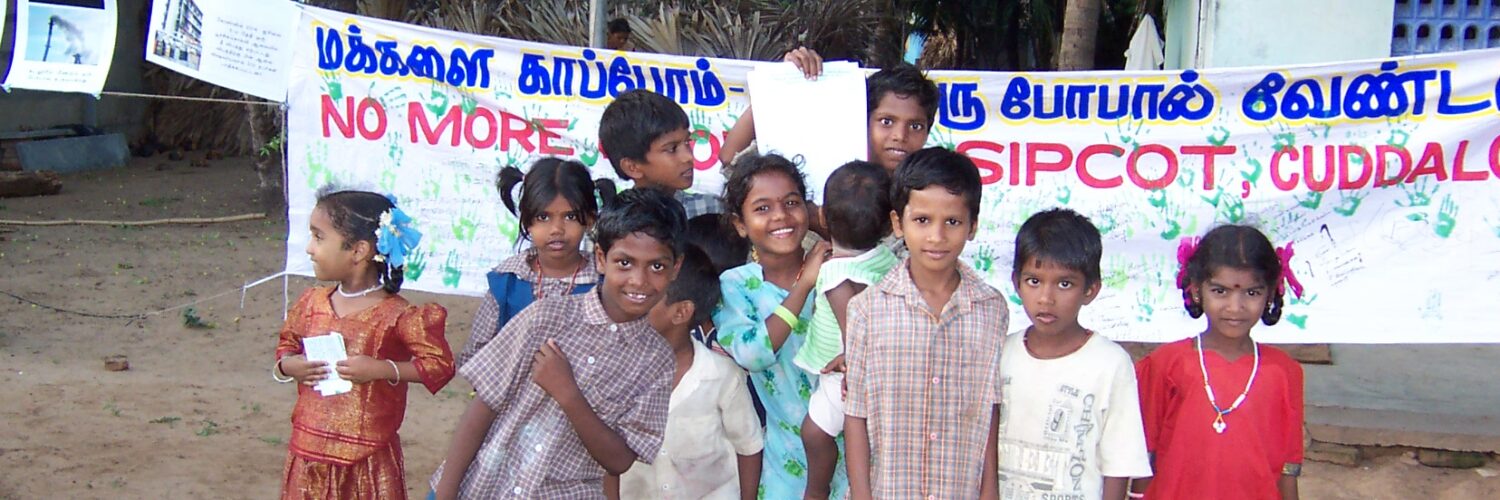By Papri Sri Raman
New Kerala
13 Jan 2006
Chennai: A major confrontation is brewing between Tamil Nadu villagers and the authorities over a hazardous waste disposal site, which people say will poison the land and groundwater.
The bone of contention is a landfill site in Gummidipoondi, 40 km north of Chennai and bordering Andhra Pradesh, where the government wants to bury toxic waste from 400 factories.
Around 200 people there, primarily women, Thursday barged into the site to protest against the landfill.
Women from the Tamil Nadu Women’s Collective in the outskirts of Redhills, where major drinking water reservoirs for Chennai are situated, and nearby areas and the representatives of Community Environmental Monitoring also joined the local villages in their protest.
The Tamil Nadu government is in a hurry to set up the toxic-waste facility because it has been pulled up several times since 1997 by the Supreme Court for failing to set up a facility to receive industrial wastes under the Hazardous Wastes Management Rules, 1989.
Gummidipoondi was chosen by the Supreme Court monitoring committee after an earlier site chosen by the Tamil Nadu government in Melakottaiyur had to be abandoned because of public opposition, says an activist agency, the Corporate Accountability Desk.
“It is in the premises of the State Industrial Promotion Corporation of Tamil Madu, and that is why the government thinks it can ignore our pleas,” says Y. Suresh, the S.R. Kandigai village panchayat president.
Suresh Friday issued a notice under the local government (panchayats) act to the promoters, asking them to “stop work and restore the site to its original condition”.
A police complaint has also been filed by the villagers of S.R. Kandigai and Pappankuppam. In June the Gummidipoondi Panchayat Union issued a resolution against the toxic facility.
Villagers also point out that the Tamil Nadu government is setting up a landfill in an area that supplied several hundred tanker-loads of freshwater to Chennai Corporation’s drinking water department in 2004.
“On the one hand, the government is contemplating a Rs.5 billion desalination plant. On the other, it is spending money to poison good water,” a villager said.
The predominantly agricultural community in the area says the landfill project violates Supreme Court guidelines, and will poison subsurface water, affect farming and threaten groundwater and public health in residential areas that lie about 500 metres from the project site.
The landfill site has a 20-feet deep porous sandstone layer, with significant subsurface water flow towards the S.R. Kandigai village and farmlands nearby. Supreme Court guidelines prohibit the setting up of such facilities near water bodies.
“Yet, the Supreme Court monitoring committee itself has chosen a site less than 100 metres from the Kuluva Cheruvu pond, a major farm water source,” Suresh told IANS.
Villagers say they are resorting to site protests because “government agencies have failed to discharge their duty of protecting the law”.
“We will move into the project site with our children and families, and physically block the location of the landfill and incinerator if the government decides to press ahead with the project,” T. Sudhakar, the spokesperson of Pappankuppam village.
“If the Supreme Court monitoring committee, the Tamil Nadu Pollution Control Board and government does not protect us, we will protect ourselves.”
“The Supreme Court committee is part of the problem,” says Chandrasekhar Reddy, another villager. “They have recommended the facility in Gummidipoondi, without first evaluating its suitability.”
Said a villager: “The fact that the committee has failed to act on our complaints shows how little premium they place on local people’s aspirations, and their disregard for laws protecting the environment and rights of panchayats.”
